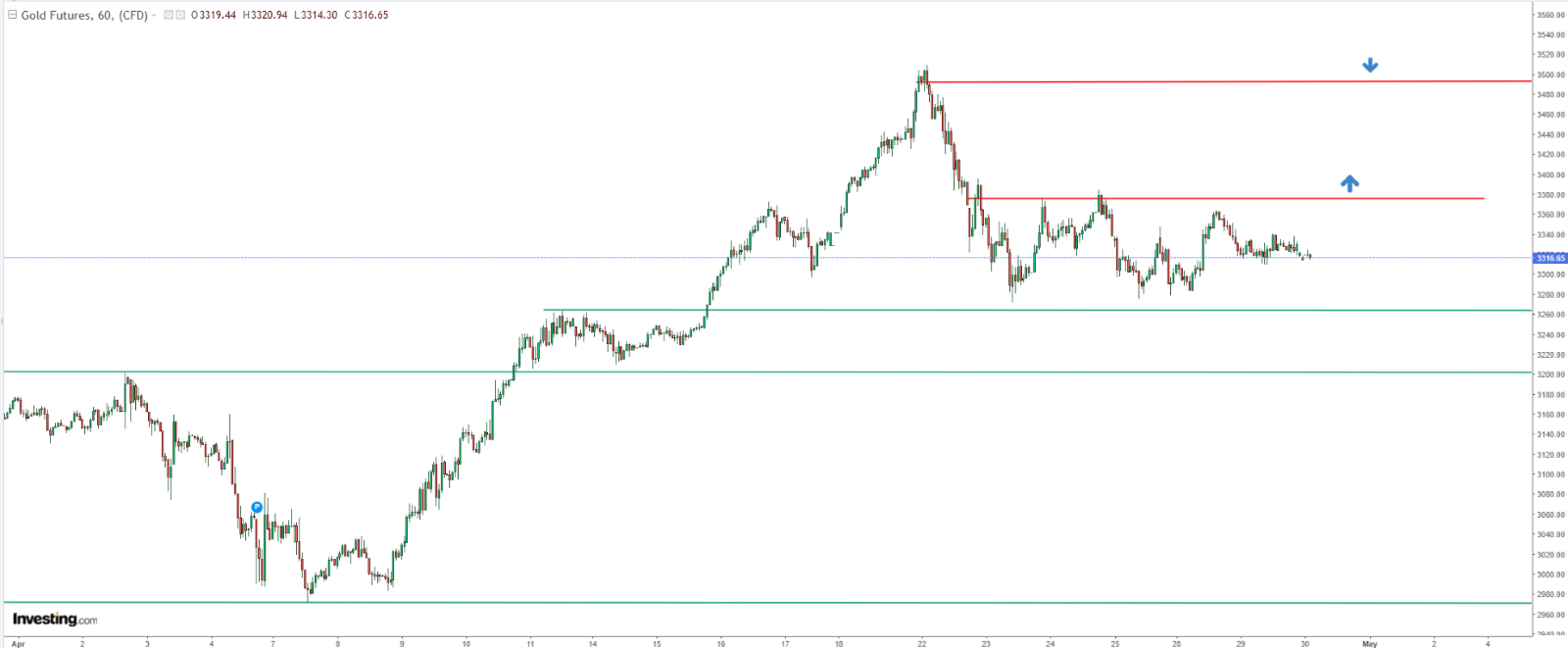Gold prices near 3-week high; could reach $4,700/oz - UBS
- Ongoing trade tensions and a weakening US dollar are pushing gold prices to historic highs.
- Asia has led the gold demand surge, with ETF inflows rising 8% in the last week.
- Gold’s next move depends on trade talks between China and the US, influencing short-term trends.
- Looking for actionable trade ideas to navigate the current market volatility? Subscribe here to unlock access to InvestingPro’s AI-selected stock winners.
Gold recently hit its highest level in history, around $3500 per ounce, last week. This significant price increase is primarily driven by ongoing tensions in the trade war, particularly between the United States and China. Additionally, a weakening US Dollar is helping boost gold, as fears grow that the Federal Reserve may cut interest rates faster due to concerns about a potential recession.
Recent signs that both sides in the trade dispute might be softening their positions have allowed the market to drop below $3400 per ounce, where it is now stabilizing. However, if negotiations remain stuck and no breakthroughs occur in the coming days or weeks, gold could break through this level, continuing its upward trend.
Asia Driving Gold Demand
According to the World Gold Council, Asian investors have been the main drivers of gold demand in recent weeks. As the trade war intensifies, gold is once again being seen as a safe haven. Last week, ETF inflows in Asia rose by 8%, which equals 23.7 tons, and on a yearly basis, demand has increased by 48.2%. In contrast, European demand has fallen by 0.6% (8 tons) over the same period, with North American demand showing little change.
Politics will likely continue to influence commodity prices in the near and medium term. Investors should focus on developments related to potential trade negotiations between China and the US. US Treasury Secretary Scott Bessent stated that it is now up to China to normalize trade relations with the US due to the imbalance in its balance sheet.
According to Bloomberg, China may have already begun by removing retaliatory tariffs on certain semiconductors. However, this is not enough to consider a breakthrough, so the coming weeks are expected to bring further twists.
Looking at forecasts for gold prices this year, major financial institutions have raised their target levels. Goldman Sachs has increased its forecast to $3700 per ounce, while UBS pointed to the $3500 per ounce range earlier this month.
Gold Consolidating Around $3300
Gold prices are currently consolidating within a range of $3270 to $3380 per ounce. A breakout from this range will be key in determining the short-term direction of the market. If the upward trend continues, a break above the upper limit could pave the way for a push towards historical highs.

A potential drop below the current range would signal the continuation of the corrective move, with the next target likely around the key level of $3200 per ounce.
****
Be sure to check out InvestingPro to stay in sync with the market trend and what it means for your trading. Whether you’re a novice investor or a seasoned trader, leveraging InvestingPro can unlock a world of investment opportunities while minimizing risks amid the challenging market backdrop.
Subscribe now and instantly unlock access to several market-beating features, including:
- ProPicks AI: AI-selected stock winners with a proven track record.
- InvestingPro Fair Value: Instantly find out if a stock is underpriced or overvalued.
- Advanced Stock Screener: Search for the best stocks based on hundreds of selected filters and criteria.
- Top Ideas: See what stocks billionaire investors such as Warren Buffett, Michael Burry, and George Soros are buying.

Disclaimer: This article is written for informational purposes only. It is not intended to encourage the purchase of assets in any way, nor does it constitute a solicitation, offer, recommendation or suggestion to invest. I would like to remind you that all assets are evaluated from multiple perspectives and are highly risky, so any investment decision and the associated risk belongs to the investor. We also do not provide any investment advisory services.
